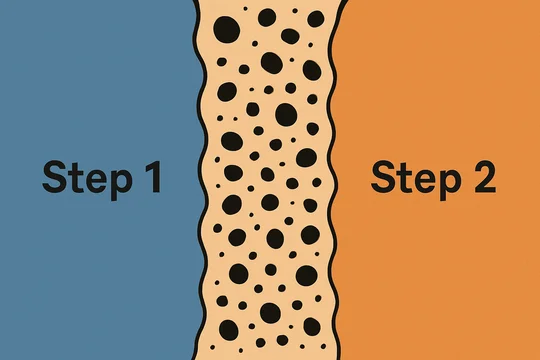
In some ways, the title says it all—but here is a bit more detail. In Throughtek Co., Ltx v. Reolink Innovation Inc., C.A. No. 23-218-GBW-SRF, D.I. 60 (D. Del. Apr. 19, 2024), the patent at issue claimed a system for identifying a networked device in order to establish a connection to it, by scanning a bar code or other image patter on the device.
The defendant moved to dismiss under § 101, arguing that the patent was directed to an abstract idea.
Judge Fallon issued an R&R holding that using the bar code for the connection information solved a problem necessarily rooted in computer technology, and was a specific improvement to computer capabilities—and, therefore, not abstract:
[C]laim 12 of the [asserted] patent discloses a method of establishing a P2P connection between a networked device and a terminal device without the need for manual entry of the networked device's identification code. . . . The information needed to establish the P2P connection is contained in the image pattern, which is captured by the terminal device for authentication and establishment of the connection. . . . In this regard, the claims of the '842 patent are "necessarily rooted in computer technology [and] overcome a problem specifically arising in the realm of computer networks."
Here, the focus of claim 12 is on a specific improvement to computer capabilities, as opposed to an abstract idea for which computers are invoked merely as a tool.
Id., D.I. 38 at 7.
Judge Williams disagreed, in light of the defendant's objections to the R&R. He found that the system was directed to little more than the idea of using a barcode to convey identification info needed to establish a communication link:
[T]he '842 patent discloses systems and methods of using an image pattern to store and communicate identification codes for networked devices. While ThroughTEK contends that this characterization "grossly understates the technological impact of the method and system architecture at the center of the '842 [p]atent," . . . the '842 patent explicitly holds that the claimed invention is "[u]nlike prior art," because it eliminates the need to "manually enter the identification code word by word" and instead "captures the barcode image of the networked device ... to allow the server to establish a P2P connection between the networked device and the terminal device." . . . Accordingly, the Court disagrees that this characterization of the '842 patent understates the purpose or impact of the claimed invention.
. . .
While ThroughTEK contends that the claim is directed at improving the function and operation of the network system . . . the Court disagrees and finds that claim 12 is directed at the abstract idea of using an image (such as a barcode or QR code) to convey identification information needed to establish a communication link (a P2P connection).
Id., D.I. 60, at 16-17.
From there, the Court proceeded to step 2 of Alice, and found no inventive concept. It also found that claim 12 was representative, and ultimately granted the motion to dismiss.
If you enjoyed this post, consider subscribing to receive free e-mail updates about new posts.






